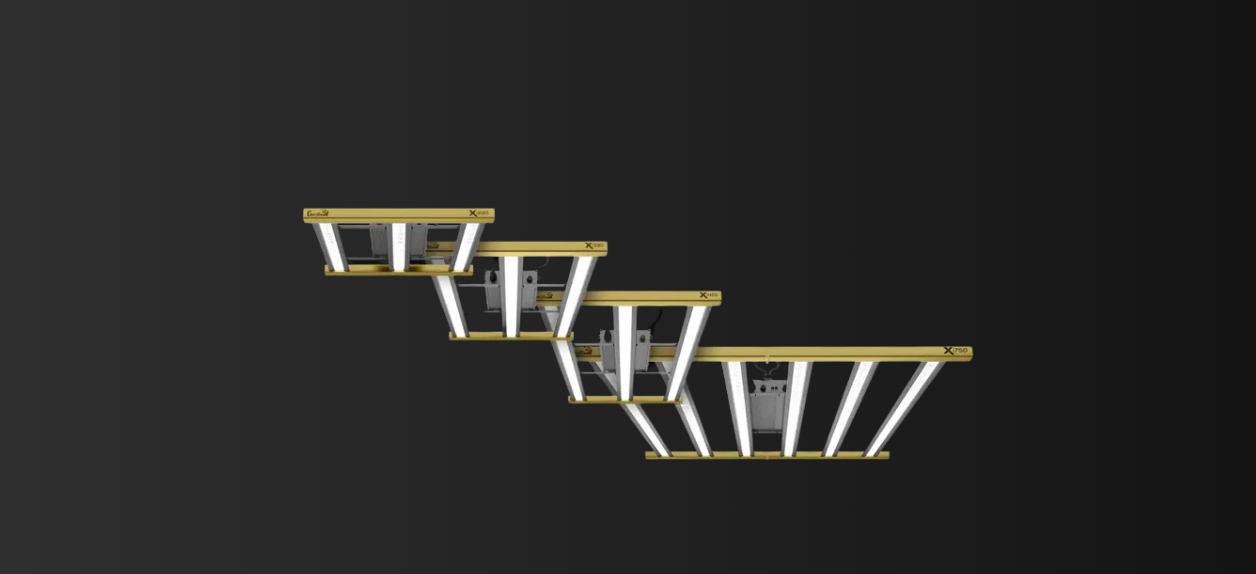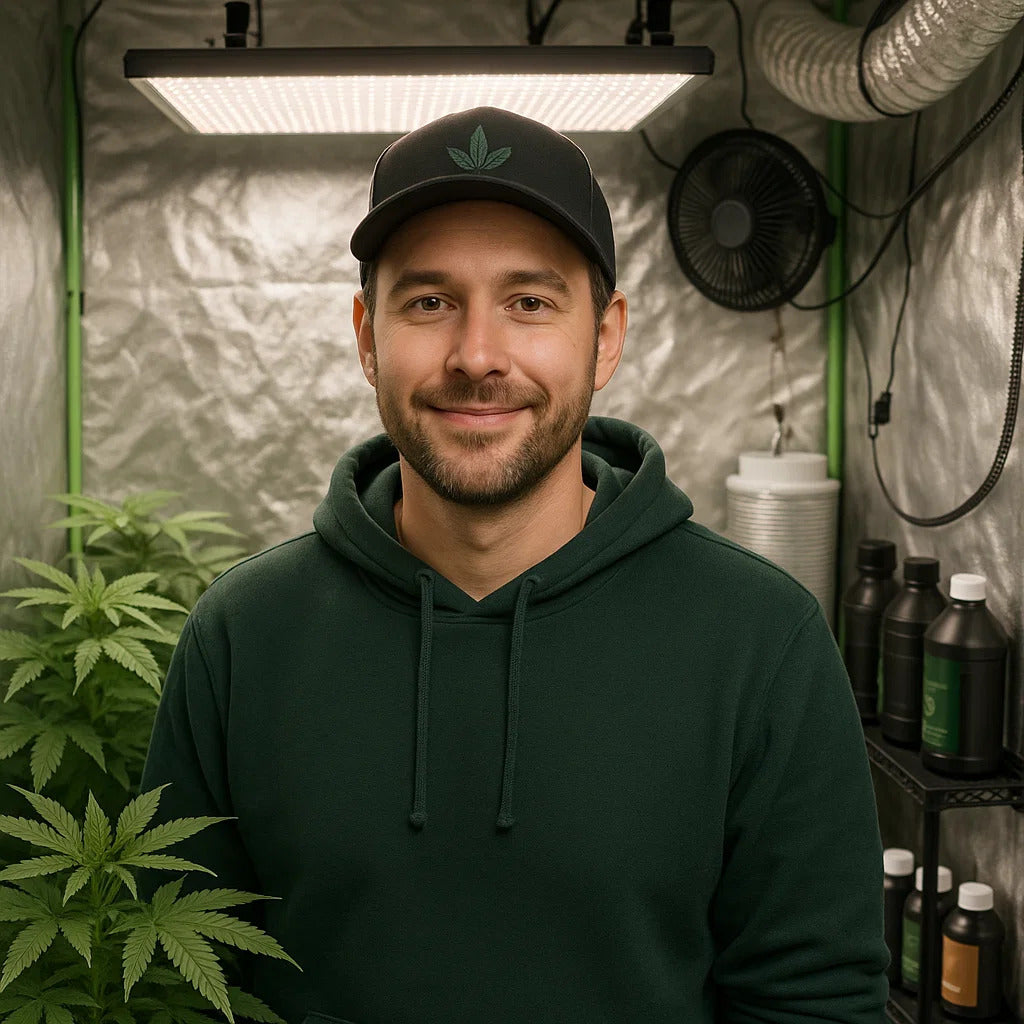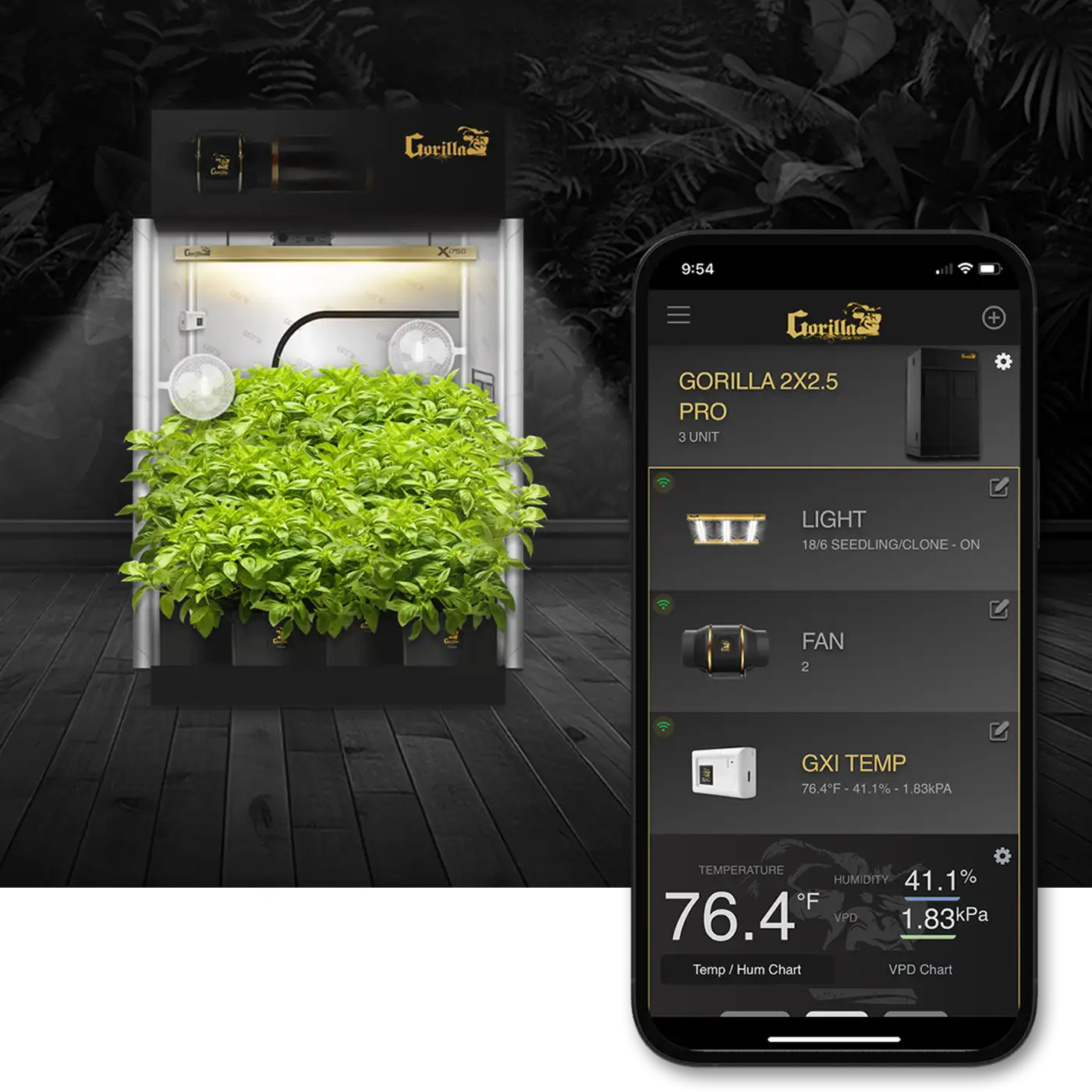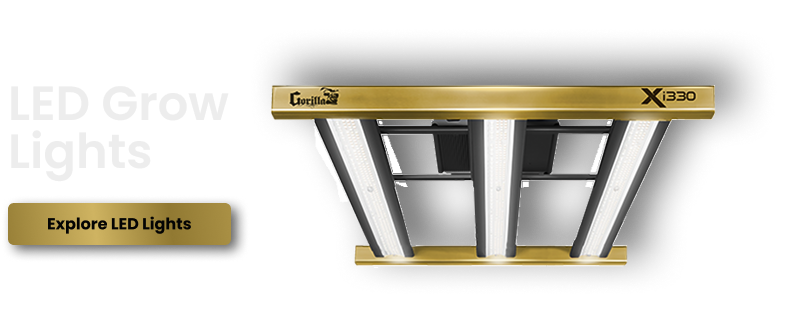
How to Choose the Best LED Grow Lights for Your Indoor Garden
Choosing the right LED grow lights can make or break your indoor garden's success. Whether you're growing herbs, vegetables, or flowering plants, understanding what makes a quality LED system will help you maximize yields while keeping energy costs low. This guide breaks down everything you need to know about selecting the perfect grow lights for your space.
The right LED grow lights provide your plants with the exact light spectrum they need at every growth stage. With hundreds of options flooding the market, knowing which features actually matter—and which are just marketing hype—will save you money and frustration. Let's explore the essential factors that separate exceptional LED systems from mediocre ones.
Understanding LED Grow Light Basics
LED technology has revolutionized indoor growing by delivering targeted light wavelengths that plants actually use for photosynthesis. Unlike traditional lighting that wastes energy producing heat and unusable light, modern LEDs convert electricity directly into photosynthetically active radiation.
Quality LED systems last 50,000+ hours—that's 5 to 7 years of continuous use without replacement. They produce significantly less heat than HID lights, making temperature management easier while reducing cooling costs. Most importantly, they allow precise spectrum control so you can optimize light output for each growth phase.

When evaluating LEDs, focus on these core specifications: wattage per square foot, light spectrum range, PPFD output, and build quality. These factors directly impact plant growth, while features like RGB color options or fancy remote controls add convenience but don't necessarily improve yields.
Light Spectrum: The Most Critical Factor
Full-spectrum LED grow lights deliver all wavelengths plants need from seedling to harvest. Blue wavelengths (400-500nm) promote compact, bushy vegetative growth and strong root development. Red wavelengths (600-700nm) trigger flowering responses and maximize fruit production.
Advanced systems like the Gorilla GXi LED Grow Lights feature tri-channel spectrum control that lets you adjust blue, red, and far-red wavelengths independently. This targeted approach delivers optimal light for each growth stage without wasting energy on unusable wavelengths.
UV and infrared wavelengths provide additional benefits during flowering. UV light increases resin production and secondary metabolites, enhancing potency and terpene profiles. Infrared wavelengths penetrate deeper into the canopy and boost flower density. Look for systems with separate UV/IR channels you can activate only when needed.
White light LEDs may seem appealing, but many were originally designed for home illumination—not plant growth. Targeted full-spectrum systems engineered specifically for horticulture deliver superior results by eliminating wasted light energy and focusing on wavelengths plants actually use.
Calculating Proper Wattage and Coverage Area
Determining the right wattage prevents both underpowering (weak, stretchy plants) and overpowering (light burn and wasted electricity). Most plants need 30-50 watts of actual LED power per square foot of growing space. Leafy greens and herbs thrive at the lower end, while flowering plants and fruiting crops demand higher intensities.
Actual wattage differs from equivalent wattage claims. A light labeled "1000W equivalent" might only draw 150 actual watts from your wall. Always check the true power draw specification rather than marketing comparisons to outdated HID technology.
Match your light's coverage area to your growing space. The Xi220 LED Grow Light crushes 2x2 to 2.5x2.5 spaces, while the Xi420 maximizes production in 2x4 to 3x4 environments. For larger spaces, the Xi750 commands 4x4 to 5x5 areas with uncompromising intensity.
PPFD (Photosynthetic Photon Flux Density) measurements indicate actual light intensity reaching your plants. Seedlings need 200-400 PPFD, vegetative growth requires 400-600 PPFD, and flowering plants demand 600-900+ PPFD. Quality manufacturers provide PPFD maps showing light distribution across the coverage area.
Essential Features for Maximum Performance
Smart controls transform basic lighting into precision growing systems. Wireless connectivity lets you adjust spectrum ratios, set automated schedules, and monitor performance from your smartphone. Sunrise/sunset ramping prevents light shock by gradually increasing and decreasing intensity—mimicking natural conditions for healthier plants.
Pre-programmed growth stage presets eliminate guesswork for beginners while allowing advanced customization for experienced growers. The ability to fine-tune spectrum throughout the growth cycle maximizes vegetative vigor during early stages, triggers flowering responses at the right moment, and boosts terpene production during final ripening.
Heat management separates quality systems from cheap alternatives. Premium LED drivers like Mean Well generate minimal heat while providing stable, reliable power. Look for lights with strategic heat dissipation designs that direct warmth away from plants while maintaining optimal intensity.
Dimming capability extends your light's usability across different growth stages and plant types. Start seedlings at 25-50% intensity, ramp up to 75% during vegetative growth, and push to 100% during flowering. This flexibility also helps manage temperature without compromising light spectrum.
Build Quality and Component Selection
Construction quality determines whether your investment lasts years or fails prematurely. Look for commercial-grade aluminum frames that dissipate heat efficiently while protecting internal components. Heavy-duty mounting systems support the light's weight safely without sagging or creating stress points.
Driver reliability accounts for 90% of LED system failures. Premium drivers from manufacturers like Mean Well cost more initially but deliver years of trouble-free operation. Cheap drivers fail unpredictably, potentially damaging your entire crop during critical growth phases.
LED chip quality impacts both light output and longevity. Top-tier chips from manufacturers like OSRAM or Samsung maintain consistent output throughout their 50,000+ hour lifespan. Inferior chips fade quickly, forcing you to increase intensity (and electricity costs) to compensate for diminished output.

Waterproof ratings matter in humid grow environments. IP65 or higher ratings protect electronics from moisture damage and make cleaning easier. Removable drivers allow external mounting to further reduce heat in your growing space.
Energy Efficiency and Operating Costs
LED efficiency determines your monthly electricity bills and overall profitability. Modern full-spectrum LEDs convert 2.5-3.0 µmol/J of electricity into usable plant light—significantly better than HID alternatives that waste 50-70% of power as heat.
Calculate true operating costs by multiplying actual wattage by your local electricity rate and daily run time. A 400-watt LED running 12 hours daily at $0.12 per kWh costs approximately $17.50 monthly. Compare this to a 600-watt HID system doing the same work for $26.25 monthly—plus additional cooling costs.
Energy monitoring features help optimize efficiency. Track power consumption patterns and adjust light schedules based on actual plant responses rather than generic recommendations. Some advanced systems provide detailed analytics showing energy use trends over time.
The initial investment in quality LEDs pays back through reduced electricity costs, eliminated bulb replacements, lower cooling requirements, and increased yields. Budget LEDs may seem attractive initially but often cost more long-term through higher energy consumption and premature failure.
Setting Up Your LED System Correctly
Proper positioning maximizes light penetration while preventing leaf burn. Start with lights 18-24 inches above your plant canopy and adjust based on plant response. Stretchy growth indicates insufficient light intensity or excessive distance. Leaf curling or bleaching signals too much intensity or positioning too close.
Create even light distribution across your entire growing area. Single-point light sources create hot spots directly underneath while leaving edges dim. Consider multiple smaller lights or lights designed specifically for even coverage rather than one oversized fixture with poor distribution.
Integrate your lighting with proper ventilation to manage heat and humidity. Even efficient LEDs generate warmth that accumulates in enclosed spaces. Learn more about optimizing airflow in our comprehensive guide to grow tent ventilation.
Light cycles vary by plant type and growth stage. Most plants thrive on 18 hours light/6 hours dark during vegetative growth, shifting to 12/12 during flowering. Autoflowering varieties can handle 18-20 hours of light throughout their entire lifecycle.
Specialized Considerations for Different Plants
Different plant types have varying light requirements. Leafy greens and herbs like basil need 400-600 PPFD and perform well under blue-heavy spectrums. Fruiting crops like tomatoes and peppers demand 600-800 PPFD with balanced full-spectrum output.
Flowering plants benefit from adjustable spectrum control. Increase blue wavelengths early to promote compact growth and strong stems. Shift toward red wavelengths as flowering begins to maximize bud development. Add UV during late flowering to boost resin production and enhance flavors.
If you're setting up your first system, our beginner's guide to grow tent setup walks you through every component you'll need beyond just lighting. Understanding how all elements work together—lights, ventilation, humidity control—creates the optimal growing environment.
For more advanced growing techniques, explore our detailed guide on indoor grow room setup that covers everything from space selection to harvest timing.
Frequently Asked Questions
What's the difference between full-spectrum and white LED grow lights?
Full-spectrum LEDs engineered for horticulture target specific wavelengths plants actually use for photosynthesis, while white LEDs designed for home illumination produce much light that plants can't utilize. Targeted spectrum systems deliver better results with less wasted energy.
How many watts of LED lighting do I need per square foot?
Most plants require 30-50 watts of actual LED power per square foot. Leafy greens thrive at 30-35 watts per square foot, while flowering plants and fruiting crops need 40-50 watts per square foot for maximum production.
Can I use regular LED bulbs for growing plants?
Standard LED bulbs lack the proper spectrum and intensity for serious plant growth. While they might keep plants alive, they won't deliver the robust growth, dense flowering, or high yields that dedicated grow lights provide. Invest in purpose-built horticultural LEDs for real results.
How far should LED grow lights be from plants?
Start with lights 18-24 inches above the plant canopy and adjust based on plant response. Watch for stretching (lights too far) or leaf curling (too close). Different growth stages may require distance adjustments as plants mature and light intensity needs change.
Do LED grow lights save money compared to traditional lighting?
LED grow lights use 50-70% less electricity than HID systems while producing superior results. A quality LED system pays for itself within 1-2 years through reduced electricity costs, eliminated bulb replacements, lower cooling requirements, and increased yields. For detailed information about growing specific plants, check out our guide on LED grow lights for indoor plants.
Summary: Key Takeaways for Choosing LED Grow Lights
Choose full-spectrum LED grow lights with 30-50 watts per square foot coverage, tri-channel spectrum control, and quality components from trusted manufacturers. Match your light's coverage area to your growing space, prioritize PPFD output over marketing claims, and invest in systems with smart controls for precision growing. Quality LEDs with premium drivers last 50,000+ hours while reducing energy costs by 50-70% compared to traditional lighting.
Transform Your Indoor Garden with Professional LED Technology
Ready to upgrade your growing operation with industry-leading LED technology? The Gorilla GXi Series LED Grow Lights combine Northern California growing expertise with intelligent wireless control, delivering unmatched results for growers at every level. From compact spaces to commercial operations, our targeted full-spectrum systems maximize genetic potential while minimizing energy waste.
Explore our complete grow tent setup guide to create the perfect growing environment around your new lighting system. Don't settle for mediocre results from cheap LEDs—invest in professional-grade equipment designed by master growers for serious cultivators. Browse our full collection of grow lights and accessories today to start growing like a pro.

Lena Myles
I'm a mushroom enthusiast and home cook based in Oregon. I'm passionate about foraging and creating fungi-focused recipes, especially delicious, plant-based dishes using gourmet mushrooms like trumpet, shiitake, and oyster. When I’m not in the kitchen, you’ll usually find me wandering the woods in search of new wild flavors.


